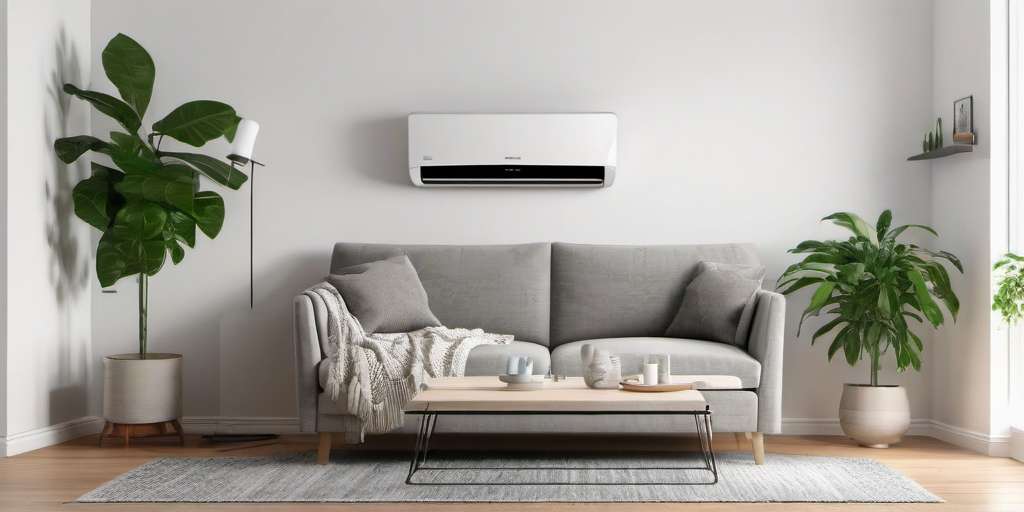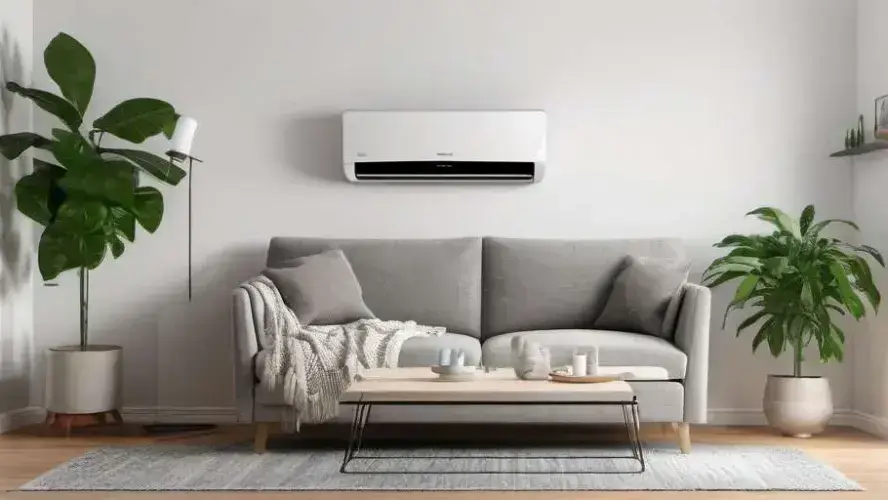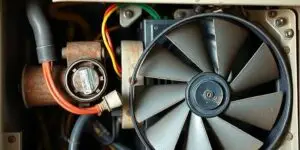Mini Split AC: The Efficient Choice for Year-Round Comfort
Mini split AC units are versatile systems designed for efficient temperature control in residential and commercial spaces. They consist of two main components: an indoor unit and an outdoor unit, which work together to cool or heat an area effectively. These systems operate without ductwork, making them ideal for homes that lack the necessary infrastructure. Mini split ACs provide customized climate control and are known for their energy efficiency and quiet operation.

What is a Mini Split AC?
Mini split AC systems are an increasingly popular choice for efficiently cooling indoor spaces. These systems consist of separate indoor and outdoor components, providing flexible installation and effective temperature regulation.
Basic Components
Understanding the basic components of a mini split AC helps in grasping its functionality and installation process.
Indoor Unit
The indoor unit is installed within the living space, equipped with a fan and evaporator coil that circulates cooled air. It can be mounted on various surfaces, including walls, ceilings, or floors, offering versatile design options to fit various room layouts.
Outdoor Unit
The outdoor unit houses critical components such as the compressor and condenser. This unit typically gets installed on a concrete slab or wall bracket outside the building, using ambient air to condense refrigerant to return to the indoor unit.
How It Works
The operation of a mini split AC system is based on the principles of refrigeration, involving a cyclical process that transfers heat from the indoors to the outdoors.
Evaporation
In the initial phase, the refrigerant in liquid form enters the evaporator coil within the indoor unit. It absorbs ambient heat from the room air, evaporating into gas, which cools and dehumidifies the air circulated back into the space.
Compression
The gaseous refrigerant then travels to the outdoor unit, where the compressor increases its pressure and temperature. This phase is crucial for preparing the refrigerant to release the absorbed heat.
Condensation
After compression, the high-pressure gas enters the condenser coil in the outdoor unit. Here, the refrigerant releases the collected heat to the outside air, transforming back into a liquid state as it cools down.
Expansion
Finally, the refrigerant returns to the indoor unit through an expansion valve. This valve drops its pressure and allows the liquid refrigerant to flow into the evaporator coil, starting the cycle anew. This continuous process effectively maintains a comfortable temperature indoors.
Types of Mini Split AC Units
Mini split AC units come in various configurations to meet specific cooling and heating needs. Understanding the different types helps in selecting the most suitable system for residential, commercial, or industrial applications.
Single Zone Systems
Single zone systems are designed to cool or heat one specific area or room. They are ideal for smaller homes, apartments, or individual rooms needing temperature control.
- Typically consist of one indoor unit paired with one outdoor unit.
- Easy to install and require minimal space.
- Generally more cost-effective for single-room applications.
Multi Zone Systems
Multi zone systems allow for the installation of multiple indoor units connected to a single outdoor unit. This system is perfect for larger homes or commercial spaces where different areas require customized temperature settings.
- Provides comfort control for several rooms or zones.
- Offers flexibility in managing energy consumption based on usage.
- Helps reduce overall installation costs compared to separate units for each room.
High Efficiency Models
High efficiency models are engineered to provide superior energy savings and performance. These systems often utilize advanced technology to enhance energy efficiency and reduce operating costs.
- Incorporate inverter technology for variable speed operation.
- Meet or exceed Energy Star ratings for environmental performance.
- Can significantly lower energy bills over time.
Heating and Cooling Systems
Some mini split units are designed to provide both heating and cooling solutions. These versatile systems can adapt to seasonal changes, offering year-round comfort.
Heat Pumps
Heat pumps function by transferring heat between the indoors and outdoors. They can effectively provide warmth during winter months and cooling in the summer.
- Utilize a refrigeration cycle to extract and distribute heat.
- Require less energy than traditional heating methods.
Ductless Mini Split Heat Pump
Ductless mini split heat pumps offer an efficient way to heat and cool spaces without the need for ductwork. This feature makes them particularly appealing for homes with existing infrastructure challenges.
- Consist of both indoor and outdoor units like standard mini splits.
- Provide targeted heating and cooling in specific zones.
Benefits of Mini Split AC Units
Mini split AC units offer a variety of benefits, making them an attractive option for efficient climate control. Their unique design provides several advantages that cater to both residential and commercial needs.
Energy Efficiency
One of the standout features of mini split AC units is their energy efficiency. They consume less power compared to traditional HVAC systems, leading to lower energy bills.
Energy Savings Calculator
Many manufacturers provide an energy savings calculator to help potential buyers estimate the cost savings based on usage and local electricity rates. This tool helps homeowners and business owners make informed decisions regarding their cooling solutions.
Energy Star Ratings
Many mini split systems come with Energy Star ratings, signifying they meet strict energy efficiency guidelines set by the EPA. This rating ensures that the unit not only saves energy but also helps reduce overall carbon footprint.
Ease of Installation
The installation process for mini split AC units is generally straightforward and less invasive compared to traditional systems. This ease of installation contributes significantly to their appeal.
Wall Mounted
Wall-mounted units are the most common configuration, easily fitted in a variety of settings. They require minimal wall drilling and can be placed strategically for optimal airflow.
Ceiling Mounted
Ceiling-mounted options are available for spaces with high ceilings or for those looking to maximize floor space. These units blend seamlessly with the interior while providing efficient cooling.
Floor Mounted
Floor-mounted units offer flexibility for installation in areas where wall space is limited. They are ideal for rooms with existing furniture arrangements that may obstruct wall-mounted units.
Customizable Climate Control
Mini split systems deliver personalized comfort levels across different spaces, making them suitable for homes and businesses alike.
Individual Room Control
Each indoor unit operates independently, allowing users to set varying temperatures in different rooms. This feature caters to individual preferences and can lead to significant energy savings.
Multi Zone View
Multi-zone systems enable the installation of multiple indoor units connected to a single outdoor unit. This setup is perfect for larger spaces needing differentiated temperature control.
Quiet Operation
Noise is often a concern when it comes to air conditioning systems. Mini split units are known for their quiet operation, ensuring comfort without disruptive sounds.
Aesthetic Design
The modern designs of mini split AC units make them an attractive option for various interior styles.
Modern Appearances
These systems are designed to blend in with contemporary home decor. Their sleek profiles ensure that they do not interrupt the aesthetic appeal of a room.
Concealed Duct Options
Some models offer concealed duct designs, allowing for nearly invisible installation. This feature is particularly desirable in high-end residential and commercial applications where aesthetics are paramount.
Drawbacks of Mini Split AC Units
While mini split AC units offer numerous advantages, they also come with certain drawbacks that potential buyers should consider. Understanding these limitations can help in making an informed decision.
Initial Cost
The upfront investment for mini split AC systems can be substantial. When compared to traditional air conditioning options like window units or portable systems, the initial purchase and installation costs are often higher. This can deter some homeowners from choosing a mini split system, especially if they are on a tight budget.
Regular Maintenance
To ensure optimal performance and longevity, regular maintenance is essential for mini split AC units. While maintenance is typically straightforward, it requires consistency and diligence from the owner.
Filter Cleaning
Indoor units come equipped with air filters that must be cleaned or replaced periodically. Dirty filters can hinder airflow and reduce efficiency, leading to increased energy consumption and potentially higher utility bills. Regular cleaning can easily mitigate these issues.
Refrigerant Checks
Another maintenance aspect involves monitoring the refrigerant levels in the system. Low refrigerant levels can signal leaks or other issues that require professional attention. Skipping this maintenance can lead to inefficient cooling and could result in more costly repairs down the line.
Professional Installation Requirement
Although easier to install than traditional ducted systems, mini split AC units still require professional installation for optimal performance. Inadequate installation can lead to reduced efficiency or even system failure. Therefore, hiring a qualified technician is crucial, which adds to the overall cost of the system.
Applications of Mini Split AC Units
Mini split AC units are widely recognized for their flexibility and efficiency in various settings. This section outlines their applications across residential, commercial, and small business environments, showcasing their versatility in providing optimal climate control.
Residential Use
Housing environments are prime candidates for mini split AC units. These systems offer effective climate control for specific areas of a home.
Bedrooms
In bedrooms, mini split systems are particularly beneficial. They provide quiet operation, allowing for restful sleep without disruptive noise. Customizable settings mean residents can adjust temperatures to their preferences.
Home Offices
For remote workers, maintaining a comfortable temperature is crucial for productivity. Mini splits enhance comfort in home offices by providing precise temperature control and minimizing energy usage.
Living Rooms
Mini splits in living rooms contribute to a pleasant atmosphere for relaxation and entertainment. Their sleek design integrates seamlessly with home aesthetics while ensuring effective cooling and heating throughout the space.
Commercial Use
Commercial spaces greatly benefit from the adaptability of mini split AC units. They provide efficient climate control without the need for complex duct systems.
Restaurants
In restaurants, mini splits create a comfortable dining experience for customers. Their ability to manage different temperatures in various sections of the venue helps maintain an inviting atmosphere, enhancing customer satisfaction.
Retail Stores
Retail environments require reliable climate control to protect merchandise and provide comfort to shoppers. Mini split systems can easily be adjusted to cater to changing conditions, ensuring an enjoyable shopping experience.
Office Spaces
Mini split systems are an excellent choice for office spaces, allowing for individualized temperature control. This feature promotes productivity and comfort among employees, leading to a harmonious work environment.
Small Business Use
Small businesses often face unique operational challenges. Mini splits offer practical solutions for maintaining ideal conditions in these environments.
Whether cooling a small shop or providing warmth in a cozy service area, these systems are efficient and effective. Their capacity for maintaining comfort in compact spaces makes them an attractive option for a variety of small business needs.
Sizing Guide for Mini Split AC Units
Determining the right size for a Mini Split AC unit is essential for achieving optimal efficiency and comfort. Proper sizing helps avoid unnecessary energy costs and ensures effective temperature regulation across different spaces.
Calculating BTUs
The cooling capacity of a Mini Split AC is measured in BTUs (British Thermal Units). Accurate calculations of the required BTUs are crucial. This involves evaluating room dimensions and considering factors that affect cooling needs.
Room Size Consideration
The size of the room is the first factor to assess. Measurements for length and width should be taken, and the total square footage calculated. For instance, smaller rooms generally require fewer BTUs:
- Up to 300 sq. ft. – Approximately 5,000 to 7,000 BTUs
- 300 to 600 sq. ft. – Approximately 7,000 to 12,000 BTUs
- 600 to 1,000 sq. ft. – Approximately 12,000 to 18,000 BTUs
Insulation and Climate Factors
Quality of insulation significantly influences cooling requirements. Well-insulated rooms retain cool air better, while poorly insulated spaces need more BTUs. Climate also plays a key role; warmer climates generally require higher BTUs for effective cooling. Key elements to consider include:
- Type and thickness of insulation
- Number of windows and sunlight exposure
- Geographic location and seasonal temperatures
Choosing the Right Size
Selecting the appropriate size unit is crucial for both comfort and energy efficiency. A properly sized system will help maintain the desired temperature without overworking the unit.
Avoiding Over-Sizing
Installing an oversized unit can lead to frequent cycling. This means the unit will turn on and off too frequently, resulting in uneven temperature distribution and higher humidity levels. It may also lead to increased wear and tear, shortening the system’s lifespan.
Avoiding Under-Sizing
Conversely, an undersized unit will struggle to cool the space efficiently, leading to continuous operation and increased energy costs. It’s essential to prevent the system from being overburdened so that it achieves the expected performance. Adequate calculations based on room sizes and insulation quality can help avoid this issue.
Finding the Perfect Mini Split AC Unit
Choosing the right mini split AC unit can significantly enhance comfort and energy efficiency in both residential and commercial spaces. Here are some key considerations to make an informed decision.
Shopping Tips
Best Brands
Several brands stand out in the mini split AC market for their reliability and performance. Some of the top brands include:
- Daikin
- Mitsubishi Electric
- LG
- Fujitsu
- Samsung
These manufacturers are known for their innovative technology, quality construction, and efficient energy use. It’s crucial to research each brand’s specific models to find the best fit.
Customer Reviews
Analyzing customer feedback can provide insight into the performance and longevity of mini split AC units. Look for reviews that highlight:
- Installation experiences
- Energy efficiency reports
- Noise levels during operation
- Customer service experiences
Websites like consumer review platforms and home improvement forums can be great resources for honest opinions from real users. Prioritize units with consistently positive feedback.
Financing Options
Investing in a mini split AC unit can be a significant expense. Many retailers and manufacturers offer financing options to help manage costs. Popular financing solutions include:
- Installment payment plans
- interest credit offers
- Home improvement loans
Before committing, it is essential to compare different financing options to find the most favorable terms and conditions that suit personal budgets.
Warranty and Return Policy
A good warranty and a solid return policy can provide peace of mind when purchasing a mini split AC unit. Consider the following:
- Length of warranty coverage (typically ranges from 5 to 10 years)
- What components are covered (compressor, parts, labor)
- Conditions for returning or exchanging the unit
Understanding these policies can help alleviate concerns regarding potential defects or issues post-purchase.
Trends in the Mini Split AC Market
The mini split AC market is witnessing dynamic changes driven by enhanced technology, consumer preferences, and environmental considerations. As energy efficiency becomes increasingly vital, various innovations are emerging to meet the needs of modern users.
Increased Energy Efficiency
Manufacturers are continually developing mini split systems that prioritize energy conservation. With growing environmental awareness and regulatory pressures, efficiency ratings are becoming a central aspect of product offerings.
Key advancements include:
- Integration of inverter technology, allowing units to adjust their speed based on cooling demands.
- Improved heat exchangers that enhance heat transfer and reduce energy consumption.
- Innovative refrigerants with lower global warming potential, contributing to sustainability goals.
Smart Home Integration
As smart home technology gains traction, mini split AC units are adapting to facilitate seamless connectivity. These advancements enable users to control their climate systems with greater flexibility and convenience.
Mobile Apps
Many contemporary mini split systems come with dedicated mobile applications. These apps provide functionalities like temperature adjustment, usage monitoring, and maintenance reminders, enhancing user experience.
Voice Control
Integration with voice-activated assistants is also on the rise. This allows users to manage their systems through simple voice commands, increasing accessibility and ease of use.
Modern Aesthetic Designs
The visual appeal of mini split units is evolving. Manufacturers are focusing on aesthetics to ensure their products blend seamlessly into modern living and workspaces.
- Streamlined units that incorporate minimalist designs while still delivering powerful performance.
- Innovative installation options, such as concealed ducts or stylish wall-mounted models, enhancing interior design.





